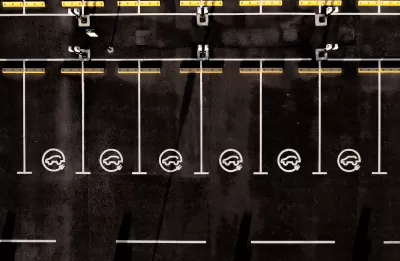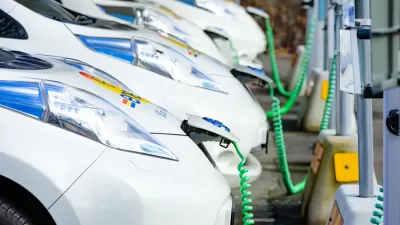A UCLA research team identifies gaps in incentive uptake and electric vehicle registration rates in disadvantaged communities.

California aims to phase out gas-powered cars by 2035, relying on increased electric vehicle (EV) adoption supported by various incentive programs. A recent UCLA Luskin Center for Innovation (LCI) report reveals significant disparities in the effectiveness of these programs, particularly in disadvantaged communities. Despite nearly a million incentives totaling close to $2 billion distributed since 2010, only about 15% of the funds have reached households in these communities.
The study also examines clean vehicle registration rates, showing that while statewide EV adoption has risen, rural areas, the urban core of Los Angeles, and lower-income communities lag behind. This trend is projected to persist through 2035, with marginalized communities falling further behind due to the lack of affordable EV options. Lead author Rachel Connolly emphasizes the need for targeted investments to ensure a just transition to clean energy in California.
To address these equity issues, the LCI report suggests several policy changes, including: increasing funding for targeted EV programs, improving vehicle financing options, enhancing the availability of used clean vehicles, expanding charging infrastructure in disadvantaged areas, and refocusing state platforms to provide financial savings rather than just advertising. These steps are crucial for California to achieve its clean vehicle targets equitably.
FULL STORY: California’s clean vehicle transition is not so equitable (yet)

Study: Maui’s Plan to Convert Vacation Rentals to Long-Term Housing Could Cause Nearly $1 Billion Economic Loss
The plan would reduce visitor accommodation by 25,% resulting in 1,900 jobs lost.

Alabama: Trump Terminates Settlements for Black Communities Harmed By Raw Sewage
Trump deemed the landmark civil rights agreement “illegal DEI and environmental justice policy.”

Why Should We Subsidize Public Transportation?
Many public transit agencies face financial stress due to rising costs, declining fare revenue, and declining subsidies. Transit advocates must provide a strong business case for increasing public transit funding.

Paris Bike Boom Leads to Steep Drop in Air Pollution
The French city’s air quality has improved dramatically in the past 20 years, coinciding with a growth in cycling.

Why Housing Costs More to Build in California Than in Texas
Hard costs like labor and materials combined with ‘soft’ costs such as permitting make building in the San Francisco Bay Area almost three times as costly as in Texas cities.

San Diego County Sees a Rise in Urban Coyotes
San Diego County experiences a rise in urban coyotes, as sightings become prevalent throughout its urban neighbourhoods and surrounding areas.
Urban Design for Planners 1: Software Tools
This six-course series explores essential urban design concepts using open source software and equips planners with the tools they need to participate fully in the urban design process.
Planning for Universal Design
Learn the tools for implementing Universal Design in planning regulations.
Smith Gee Studio
Alamo Area Metropolitan Planning Organization
City of Santa Clarita
Institute for Housing and Urban Development Studies (IHS)
City of Grandview
Harvard GSD Executive Education
Toledo-Lucas County Plan Commissions
Salt Lake City
NYU Wagner Graduate School of Public Service





























